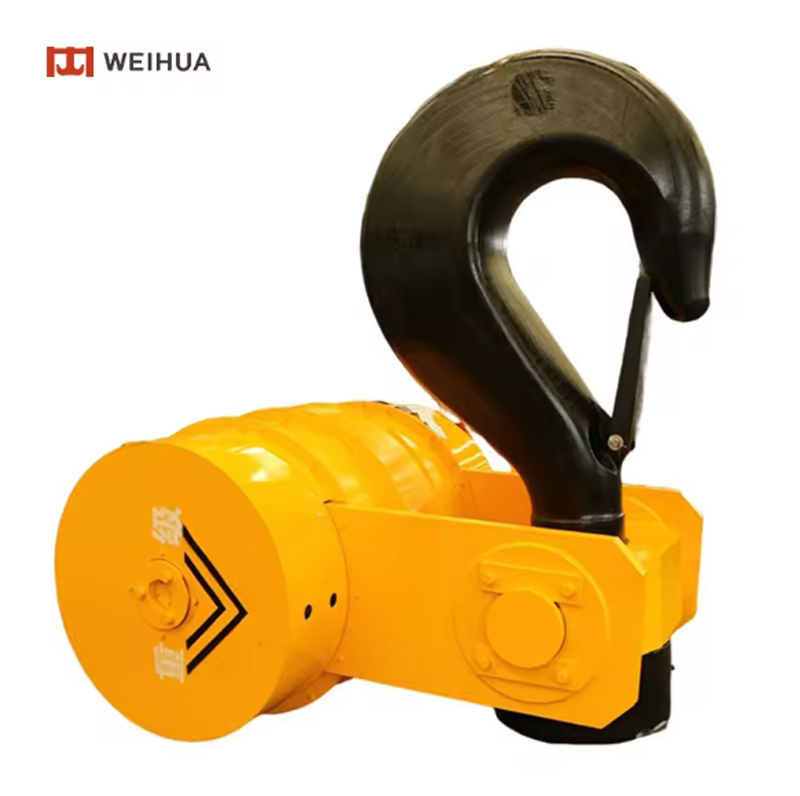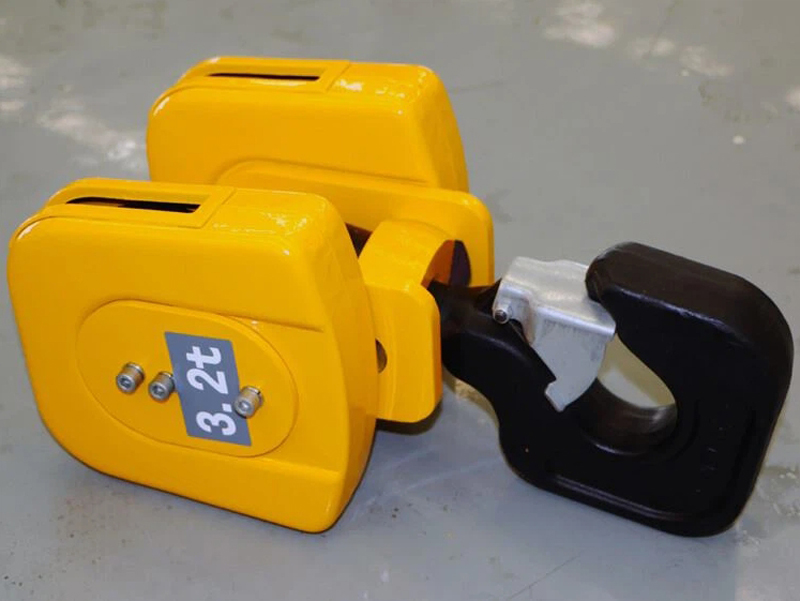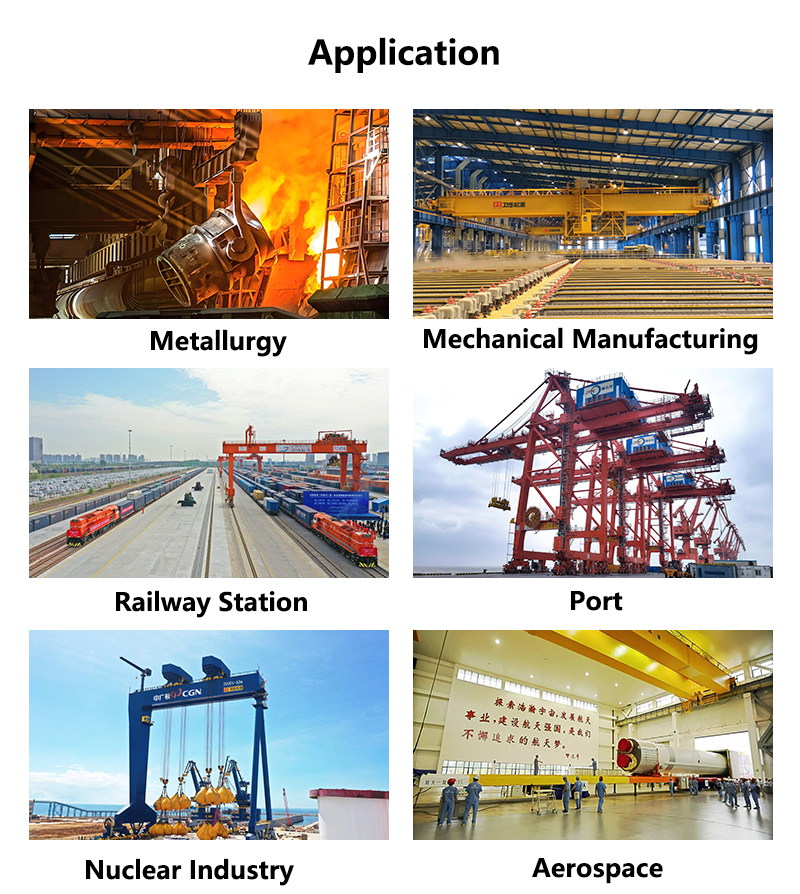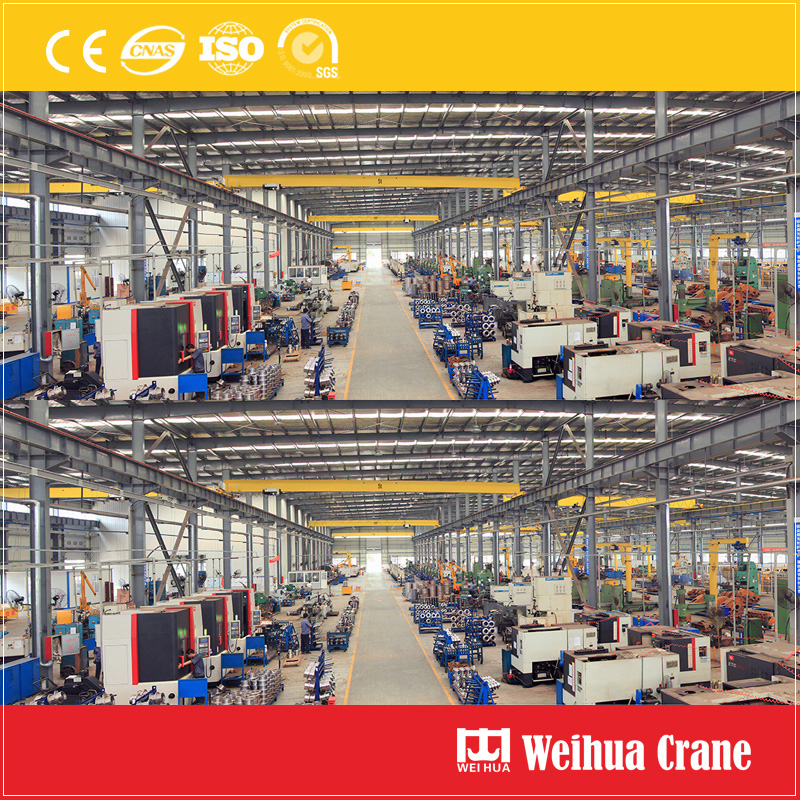El papel crítico del ajuste de la altura del gancho de la grúa
2025-08-18
En el intrincado ballet de las obras de construcción., astilleros de envío, e instalaciones industriales, la grúa reina suprema. Su capacidad para levantar cargas inmensas con precisión es fundamental para el progreso.. Mientras que la capacidad de elevación bruta a menudo acapara los titulares, Con frecuencia se pasa por alto un aspecto más matizado e igualmente vital de la operación de la grúa.: ajuste de altura del gancho de grúa. Este control preciso sobre la posición vertical del gancho de carga no es simplemente una conveniencia; es una piedra angular de la seguridad, eficiencia, y éxito operativo.

Por qué es importante la altura del gancho
Preciso ajuste de altura del gancho de grúa Impacta casi todas las fases de una operación de elevación.:
-
1. La seguridad es primordial: Esta es la principal preocupación.
- Autorización: Garantizar suficiente espacio libre por encima de los obstáculos (techos, tubería, otros equipos) y abajo (personal, estructuras, instalaciones existentes) es critico. Una altura insuficiente corre el riesgo de colisiones catastróficas. La altura excesiva puede provocar un balanceo inestable de la carga o el contacto con peligros elevados como líneas eléctricas..
- Estabilidad: Control preciso de la altura durante la elevación, emocionante, y al bajar se minimiza el movimiento pendular (influencia). La influencia incontrolada pone en peligro al personal, daña la carga, y corre el riesgo de desestabilizar la propia grúa, especialmente cuando se opera cerca de su capacidad.
- Colocación controlada: Bajar una carga de varias toneladas a un espacio confinado (P.EJ., Colocar maquinaria sobre una base., cargar la bodega de un barco) exige un posicionamiento final milimétricamente perfecto. El ajuste preciso de la altura del gancho de la grúa es esencial para esta delicada tarea.
-
2. Eficiencia operativa: El tiempo es oro en cualquier proyecto..
- Ciclos más rápidos: Los operadores que pueden lograr de forma rápida y precisa la altura correcta del gancho minimizan el tiempo dedicado a maniobrar innecesariamente o corregir errores de posicionamiento..
- Remanipulación reducida: La colocación inicial precisa gracias al ajuste adecuado de la altura del gancho de la grúa elimina la necesidad de volver a levantarlo y reposicionarlo, lo que requiere mucho tiempo y es potencialmente peligroso..
- Flujo de trabajo optimizado: Las transiciones de altura suaves permiten una integración perfecta con otras actividades del sitio, como guiar cargas a través de puertas o coordinar con el personal de tierra para el montaje y colocación.
-
3. Protección de carga: Proteger la valiosa carga que se levanta es crucial.
- Manejo suave: Revisado, El descenso preciso evita impactos repentinos o sacudidas que podrían dañar equipos sensibles., componentes estructurales, o módulos prefabricados.
- Evitar el arrastre: Mantener una altura adecuada durante el recorrido evita que la carga se arrastre por el suelo o se enganche con obstáculos..

Métodos de ajuste de la altura del gancho de la grúa
La tecnología y los métodos para ajuste de altura del gancho de grúa varían según el tipo de grúa y la sofisticación:
- 1. Control de elevación manual (Común): El operador utiliza joysticks., palancas, o pedales en la cabina para controlar el motor de elevación, subir o bajar el gancho y bloque de grúa. La habilidad y la experiencia son vitales para una fluidez., ajustes precisos.
- 2. Operación de control remoto: Muchas grúas modernas, especialmente los tipos elevados y de pórtico, cuentan con controles remotos inalámbricos. Esto permite al operador moverse con la carga., ofreciendo una mejor vista para un ajuste preciso de la altura del gancho de la grúa, particularmente durante la colocación final.
- 3. Indicadores de momento de carga (LMI) y sistemas anticolisión: Si bien no es control de altura directo, Estos sistemas avanzados informan sobre el ajuste de altura.. Los LMI muestran la altura del gancho junto con el radio y el peso de la carga.. Los sistemas anticolisión utilizan sensores para advertir a los operadores o incluso detener automáticamente el movimiento si se detecta una posible colisión según la altura y la posición del gancho..
- 4. Elevación automatizada (emergente): Los sofisticados sistemas de grúas incorporan controladores lógicos programables. (PLC) y sensores. Pueden realizar ciclos de elevación/descenso preprogramados con objetivos de altura precisos, o incluso utilizar guía láser/LiDAR para un ajuste totalmente automatizado de la altura del gancho de la grúa en relación con un punto objetivo.

Lograr precisión
Masterización ajuste de altura del gancho de grúa requiere más que solo tecnología:
- 1. Habilidad del operador: La experiencia es irremplazable. Los operadores cualificados desarrollan una sensación de respuesta de la grúa, anticipar la oscilación de la carga, y realizar microajustes sin esfuerzo.
- 2. Comunicación clara: Protocolos de comunicación rigurosos (señales con las manos, radios) entre el operador, persona de señales, y los aparejadores son esenciales, especialmente cuando la visión del operador está obstruida.
- 3. Planificación adecuada: Los planes de elevación deben considerar explícitamente los requisitos gancho alturas en diferentes etapas de la operación, Identificar puntos de paso y obstáculos potenciales..
- 4. Comprender la dinámica: Los operadores deben tener en cuenta factores como el peso del bloque de gancho., Estirar cables metálicos bajo carga., y efectos del viento, Todo lo cual puede influir sutilmente en la altura efectiva del gancho durante el levantamiento..


El futuro del control de altura
La tecnología continúa perfeccionándose ajuste de altura del gancho de grúa. Integración con el modelado de información de construcción (BIM) podría permitir a las grúas "conocer" el entorno 3D exacto, calcular automáticamente las trayectorias y alturas óptimas del gancho. Fusión de sensores mejorada (camaras, LiDAR, unidades de medida inercial) promete una precisión y automatización aún mayores en la gestión de altura en tiempo real.
Ajuste de altura del gancho de grúa es mucho más que simplemente mover el gancho hacia arriba y hacia abajo. Es una habilidad fundamental y una capacidad tecnológica que sustenta la seguridad, eficiente, y operaciones de elevación precisas. Desde prevenir accidentes catastróficos hasta garantizar colocaciones delicadas y optimizar el flujo de trabajo, el control preciso de la posición vertical del gancho es indispensable. A medida que evoluciona la tecnología de las grúas, también lo hará la sofisticación de ajuste de altura del gancho de grúa, pero el principio fundamental sigue siendo: Dominar esta función esencial es clave para desbloquear todo el potencial de cualquier grúa y garantizar el éxito de cualquier elevación.. Invertir en la tecnología adecuada, capacitación, y procedimientos para un control preciso de la altura es una inversión en seguridad, productividad, y el éxito general del proyecto.







Últimos comentarios